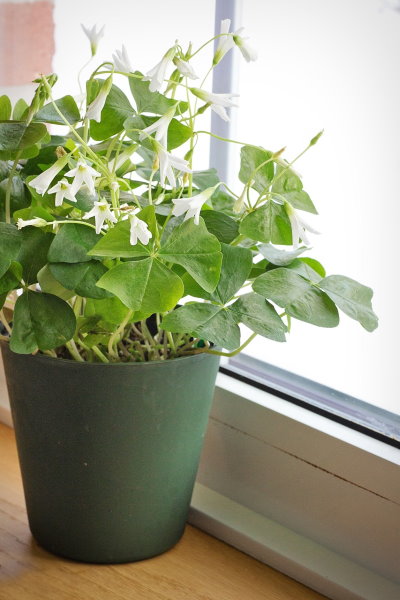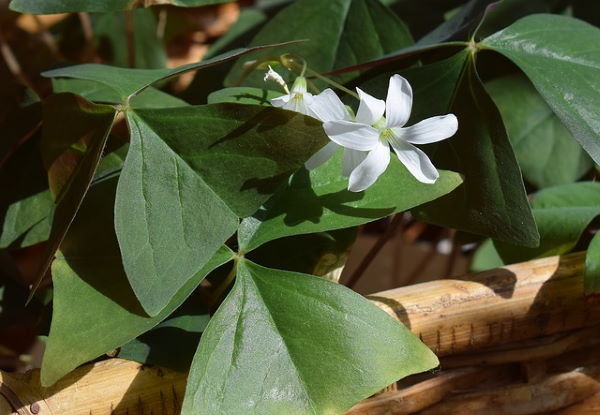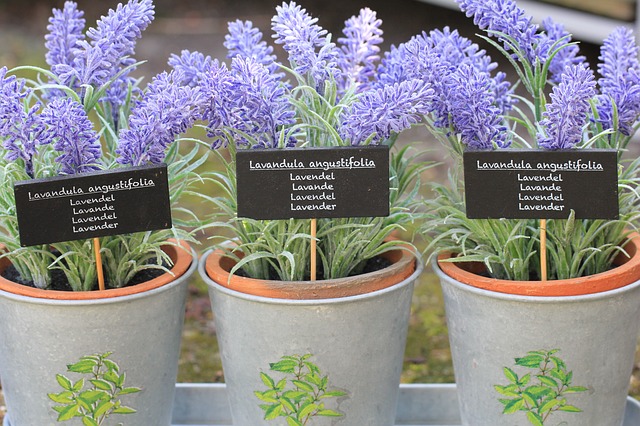Grow Shamrock Plant Indoors
Shamrock plant is cherished for its resemblance to four leaf clovers, making it a popular St. Patrick's Day gift plant.
Perhaps you could consider these St. Patrick's Day shamrocks "lucky" because they are easy to grow. These perennial plants thrive in average room conditions, making shamrock care a breeze.
 Image by Jill Wellington
Image by Jill WellingtonGet to Know Your Shamrock Plant
Known botanically as Oxalis, this genus includes hundreds of species native to tropical regions, including South Africa, Mexico, and Central and South America.
Shamrock plants make great house plants. When grown outdoors, shamrocks have an invasive nature. Their fast-spreading tuberous roots can spread like wildfire. However, when confined to a container, you can put this plant on your windowsill to enjoy the lush, clover-like leaves and charming little flowers up-close.
How big do shamrock plants get? They typically grow to a height of 6-12 in (15-30 cm).
Plants may get leggy over time. You can simply cut stems to the soil level anytime. This vigorous grower will sprout new foliage within a few weeks.
Did you know...
Oxalis is not a true clover -- it's in the Wood Sorrell family. Because it looks similar, this plant borrows its "lucky" status from four leaf clovers.
Do shamrock plants bloom? Yes. Given enough light, you can expect lots of blooms in the spring and summer. The 5-petaled flowers are held on tall, slender stems above the foliage and may be white, pink or red, depending on the species.
Folded leaves? Shamrocks fold up their leaves at night, opening them again in the morning light. Cool, huh?
Repot in spring, when the tuberous roots have filled the pot. This is a good time to divide the plant, if you want.
Something bugging your houseplant? This fast-growing houseplant seems to shrug off pests, but there are a few to watch for: spider mites, thrips, whiteflies and mealybugs are the most common. Isolate any infested houseplant and treat it right away.
Yellow leaves are a symptom of an over-watered plant. You can cut the affected stem at the soil level. A vigorous grower, Oxalis will soon replace the leaves.
Got a dormant plant? Shamrock plant may go dormant if the soil is allowed to dry out or if it's exposed to hot, direct sun. If this happens, don't worry. And don't give up on it. Oxalis may stay dormant for several weeks. Reduce watering, stop fertilizing, and keep the plant cool. When the leaves die back, cut them off. When your plant starts growing again, resume normal care and you'll have a mound of new, green foliage in just a few weeks.
 Photo credit AYImages / istockphoto
Photo credit AYImages / istockphotoShamrock Plant Varieties

You'll find shamrock plants in florist shops before St. Patrick's Day. The bulbs are also easy to grow -- and to find online.
Oxalis deppei, pictured at left, has lobed leaflets and pinkish-red flowers. Sometimes called Iron Cross for the purple-brown markings that form a circle in the center.
Purple Shamrock is another popular variety. Its large, dark-purple leaflets make it a beautiful house plant.
 Image by Jan Haerer
Image by Jan HaererShamrock Plant Care Indoors
Light: Bright light with some direct sun. Leggy, spindly growth is often caused by lack of light. Move the plant to a spot where it will get curtain-filtered light from a sunny window.
Water: Allow surface of soil to dry between waterings. Shamrock plant retains water in its tuberous roots and won't tolerate soggy soil.
Humidity: Average indoor (around 40-50% relative humidity). If indoor air is dry, you can boost humidity for your plant by setting it on a pebble tray or use a cool-mist room humidifier.
Temperature: Cool to average 55-65°F/13-18°C at night, not warmer than 75°F/24°C during the day.
Soil: Any good-quality potting mix will do.
Fertilizer: Feed monthly in spring and summer with a balanced water-soluble fertilizer diluted by half.
Propagation: Divide the plant by gently pulling apart its small, tuberous roots into smaller clumps and potting them in separate containers. Don't bury them too deep; set the tubers 1/2" below the soil. Sow shamrock seeds in spring.


